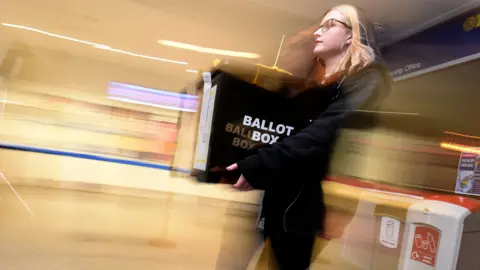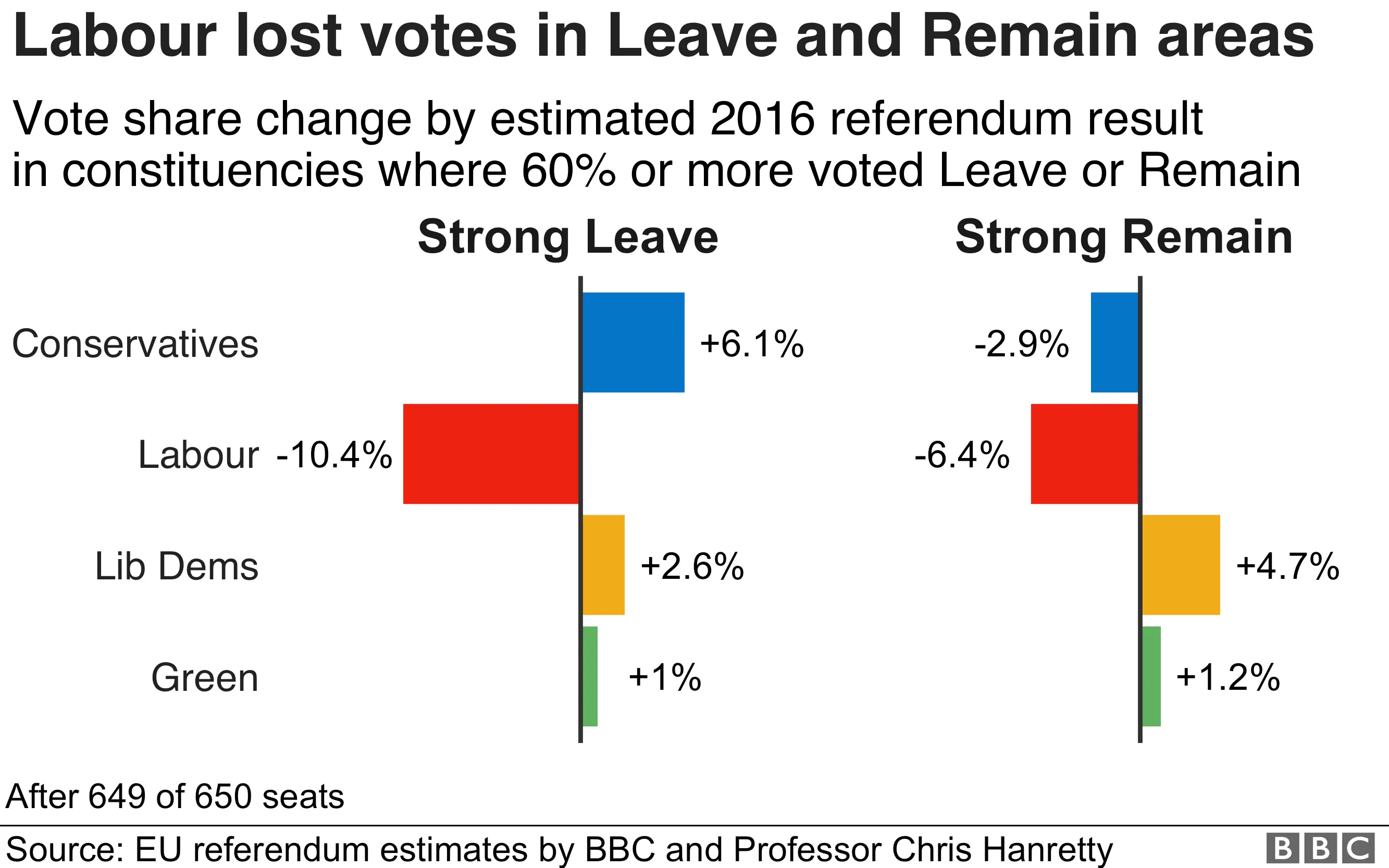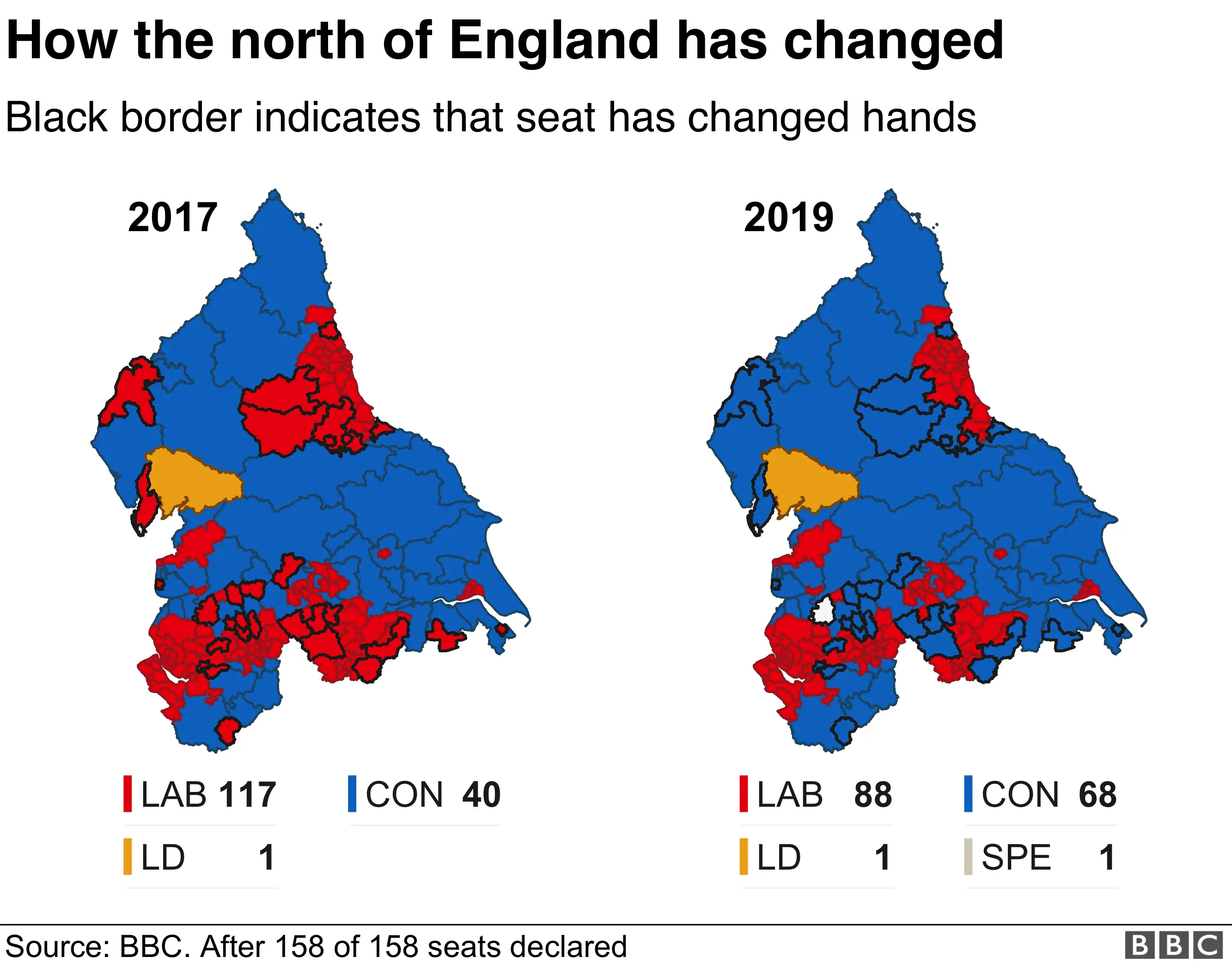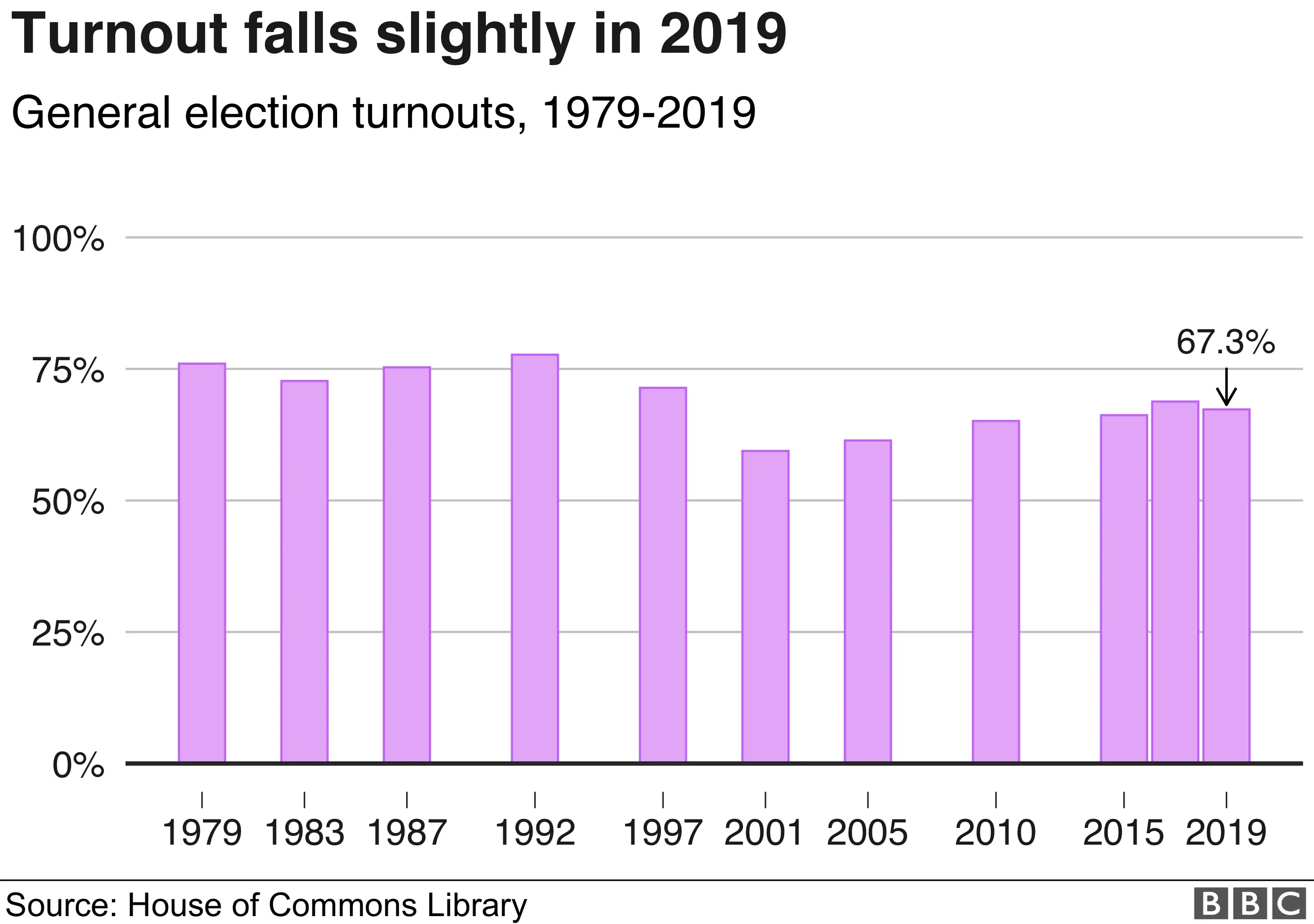General Election 2019: What's behind the Conservative victory?
 Getty Images
Getty ImagesBoris Johnson has won a decisive majority, on the back of a big swing from Labour to the Conservatives in Leave-voting Britain.
Yet north of the border the SNP dramatically almost swept the board.
With all results now declared, the prime minister has won a majority of 80 seats - the biggest Tory majority since 1987.
Meanwhile, at 44%, the party's share of the vote is set to be at its highest since 1979, when Margaret Thatcher became prime minister.
Labour, in contrast, finds itself with little more than 200 seats, even fewer than the party won in its previous worst post-war result in 1983.
The difference between Leave and Remain seats
However, the swing in the Tories' favour varied dramatically across the country.
In those seats where more than 60% of voters backed Leave in the 2016 EU referendum, the increase in Conservative support on average was 6%.
However, in those seats where more than 60% voted Remain, the party's vote actually fell by three points.

In contrast, Labour's vote fell on average by more than 10 points in the most pro-Leave areas.
Its vote fell by more than six points in the most pro-Remain ones.
Working-class and middle-class voters
This pattern had a clear impact on the geography of the election.
Support for the Conservatives rose by four points in the Midlands, the North East and Yorkshire - the regions of England that voted most heavily in favour of Leave.
In contrast, the party's vote fell back by a point in London and the South East.
And in Scotland, the party's vote fell by as much as four points.
Conversely, Labour saw its vote fall by 12 to 13 points in the North East and Yorkshire, while it fell by only six or seven points in London and the South of England.
The result also saw Labour lose ground heavily in its traditional working-class heartlands.

Support for the party fell by 11 points in those constituencies with most voters in working-class jobs.
Its share of the vote fell by only seven points in those with most middle-class voters.
The bond between Labour and its traditional working-class base is now badly strained.
In the EU referendum working-class voters voted heavily to leave the EU. These voters had already swung quite strongly to the Conservatives in 2017.
Labour tried to retain their support - remaining ambiguous about whether it was a pro-Remain or a pro-Leave party.
But this election simply saw the pro-Conservative trend continue yet further.
As a result, Labour dramatically lost many a seat in the North of England and the Midlands - places such as Ashfield, Bishop Auckland, and Workington - that had never previously elected a Conservative MP in a general election.
An emboldened SNP
The success of the Conservatives in England and Wales was matched by that of the SNP in Scotland.
The party has won 48 of the 59 seats north of the border, and 45% of the vote across Scotland as a whole.
It is a result almost as good as the party's historic performance in the 2015 election.

And, in a country that voted in favour of Remain, it is likely to embolden the SNP in its pursuit of a second independence referendum.
That is a ballot to which the Conservatives are strongly opposed. So, a constitutional clash between the Scottish and UK governments seems likely.
Liberal Democrat losses
One of the SNP's biggest scalps was the Dunbartonshire East seat of Liberal Democrat leader Jo Swinson - a defeat that capped a miserable night for the Liberal Democrats.
Despite advancing more strongly in pro-Remain areas, the party seems likely to end up with only 11 or 12 seats.
This will be no more than the number they won in 2017, even though their share of the vote is up by four points.
None of the many MPs who defected to the party during the last Parliament have been able to retain their seats.


Fewer than half backed Brexit parties
The announcement of the election was greeted with concern about the level of turnout, for a ballot held just a fortnight before Christmas.
In the event, about 67% of voters made it to the polls - just two points down on 2017.
Turnout fell most markedly in seats where Labour are relatively strong, suggesting that some of those who usually support the party opted to stay at home.

The Conservatives' success means that Britain will now leave the EU at the end of January.
However, it seems unlikely to end the debate about Britain's relationship with the EU.
The country's divisions over Brexit were exposed in the very different swings across the country.
Meanwhile, at 47%, fewer than half of voters backed the Conservatives or the Brexit Party - the parties in favour of leaving the EU without another referendum.
This is a point to which opponents of Brexit are likely to point in the weeks and months to come.
But for now at least, the day clearly belongs to Mr Johnson.

- WHO WON IN MY CONSTITUENCY? Check your result
- NATIONAL PICTURE: The result in full
- ALL YOU NEED TO KNOW: The night's key points
- MAPS AND CHARTS: The election in graphics
- BREXIT: What happens now?
- IN PICTURES: Binface, a baby and Boris Johnson


About this piece
This analysis piece was commissioned by the BBC from an expert working for an outside organisation.
Sir John Curtice is professor of politics, Strathclyde University, and senior research fellow at NatCen Social Research and The UK in a Changing Europe.
He worked on this piece with: Professor Stephen Fisher, Oxford University; Professor Rob Ford, University of Manchester; Professor Jouni Kuha, London School of Economics; Jon Mellon, University of Manchester; and Patrick English, University of Exeter.

Edited by Duncan Walker
